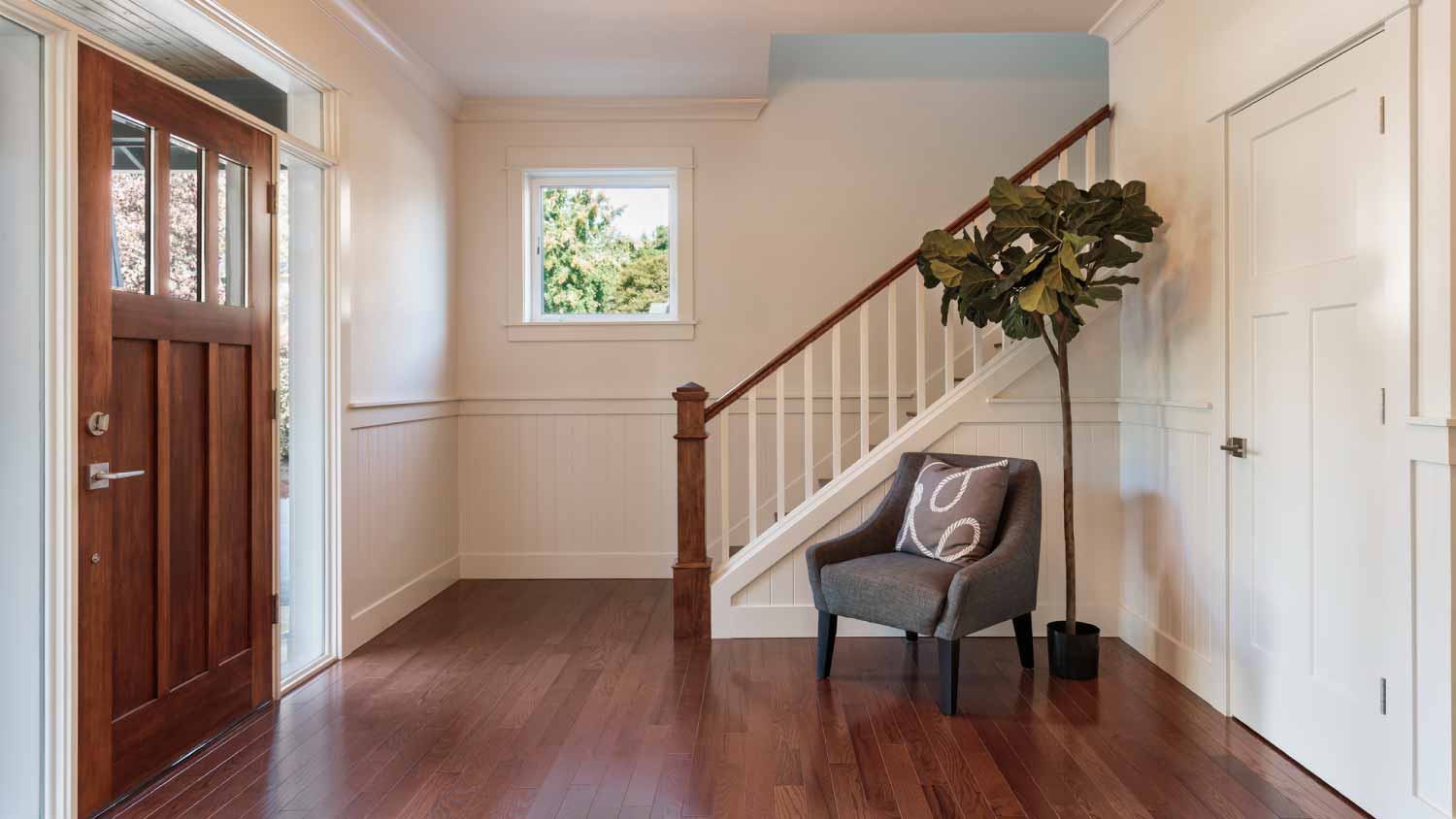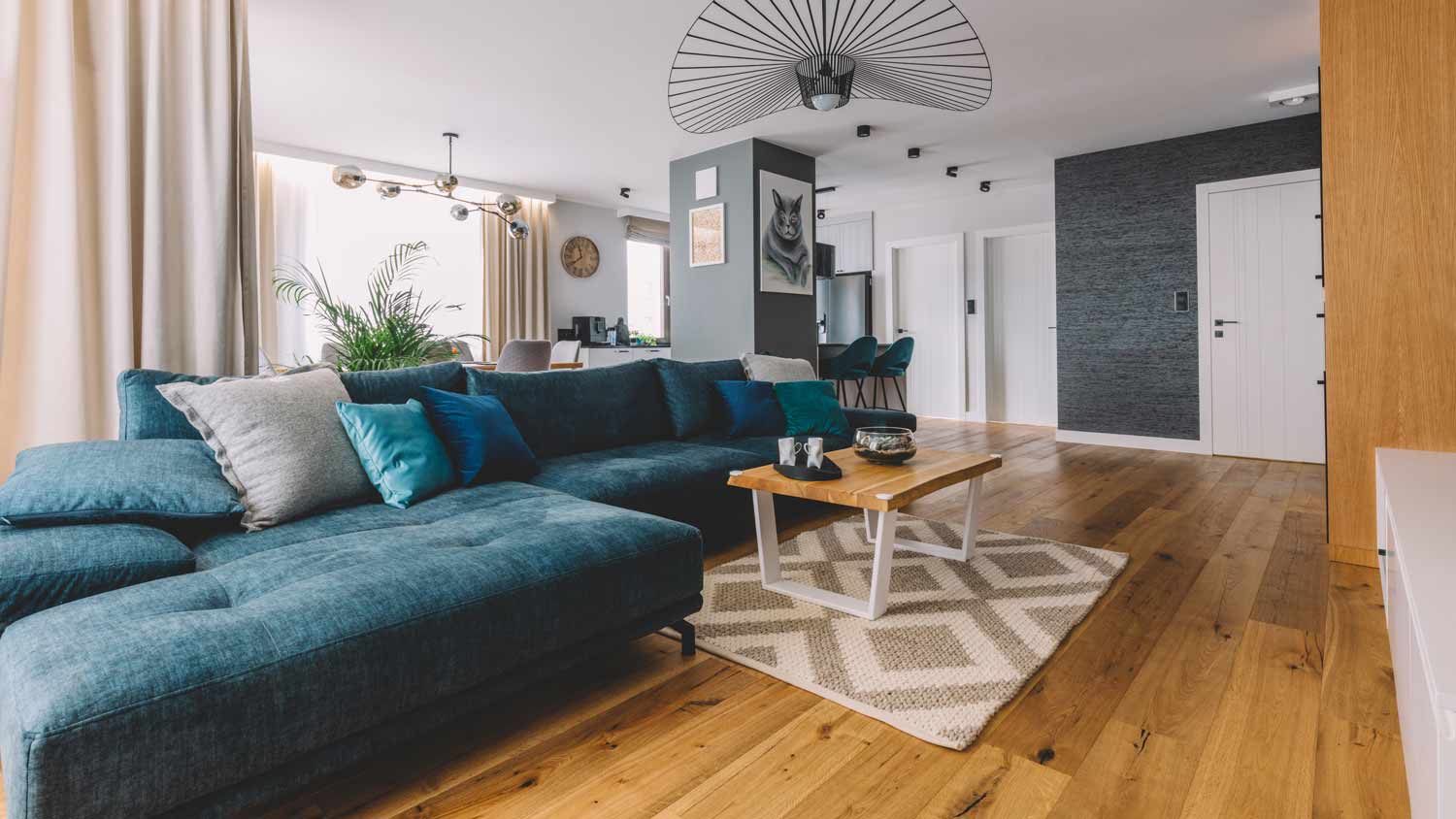What to Consider When Choosing Between Floor Coverings and Structural Installations
A beautiful interior starts with a good foundation
Structural installations are permanent, while floor coverings are temporary.
Floor coverings are less expensive than structural installations.
Structural installations increase your home's value more than floor coverings.
Your floors are literally and figuratively the foundation of your interior, so they play a significant role in your home's overall design and functionality. When deciding on flooring, you'll first need to choose between two main floor types: floor coverings or structural installations. Learn more about the advantages and drawbacks of each type to narrow down the best fit for your home.
But First, What Are Floor Coverings and Structural Installations?
All flooring types typically fit into either floor covering or structural installation categories. Knowing the difference between flooring types will help you decide which is right for you.
Structural Installations
Structurally installed floors are considered permanent floors because they're part of your home's structure. The most common structural floor installations include solid hardwood that is 3/4-inch or thicker, stone, and ceramic tile. Some “soft” wood flooring is very hard, such as Southern Yellow Pine, and can be categorized as structural. Removing structural installations is more difficult than removing floor coverings because it requires adjusting your home's infrastructure. This flooring type adds structural value to your home.
Floor Coverings
Unlike structural installations, floor coverings aren't part of your home's structure. Instead, they're installed on top of your home's existing subfloor to add aesthetic value. They're easier to install and remove than structural installations. Common floor covering types include engineered wood, laminate, vinyl, and carpet.
Floor Covering Pros and Cons

Floor coverings are less expensive and easier to install than structural installations, but they're not as durable and require more frequent replacements.
Pros
Relatively inexpensive: Floor coverings generally cost less than structurally installed floors. Depending on the type you choose, floor coverings run about $3 to $10 per square foot.
Versatile design: Floor coverings come in many different styles, materials, and colors, so it's easy to find an option that complements your unique aesthetic. Plus, if you love the look of hardwood floors but not the cost, you can find engineered hardwood floor coverings that look very similar to hardwood floors without the high price tag.
Easy to install and replace: Since floor coverings don't require you to adjust your home's structure, they're much easier to install than structural installations. They're also easier to remove, so if you often change your mind about your aesthetic, you might prefer the more temporary design of floor coverings.
Cons
Shorter lifespan: Floor coverings typically have a shorter lifespan than structurally installed floors. They usually last around 10 to 25 years, depending on quality and installation.
Less durability: Floor coverings are generally softer and thinner than structurally installed floors, like stone and hardwood, so they're more prone to damage. And since floor coverings are typically installed in large sheets, fixing a damaged area can require replacing most or all of the floor in a room.
Structural Installation Pros and Cons

Structurally installed floors are long-lasting, and they can increase your home's value; however, they're usually more expensive to install and replace than floor coverings.
Pros
Increases home value: This flooring type adds structural value to your home, which can yield higher returns should you decide to sell your home.
Longer lifespan: Structurally installed floors are considered permanent floors since they're integrated into your home's structure. With proper installation and maintenance, this flooring type can last a lifetime.
More durability: Structural installations typically include stone, hardwood, or porcelain or ceramic tile. All of these materials are hard and durable, so they can withstand much of what life throws their way. Plus, you can often fix structurally installed floors simply by replacing a tile or plank rather than the whole floor like you might have to do with floor coverings.
Cons
More expensive: Structurally installed floors are generally more of an investment than floor coverings, ranging from around $6 to $22 per square foot.
Challenging to replace: Since these floors are part of your home's structure, the removal and replacement process is more costly and time-consuming than it is with most floor coverings.
Structural Installations vs. Floor Coverings
Still not sure whether structural installations or floor coverings are right for your home? Here's a breakdown of their benefits and drawbacks by feature to help you decide.
Options & Customizations
Floor coverings come in a seemingly infinite array of colors, styles, and materials, ranging from carpet and laminate to vinyl and engineered wood, so it's easy to find the perfect fit for your aesthetic. Structurally installed floors are slightly more limited in options, but you can still choose from a fairly wide variety of hardwood, ceramic tile, and stone options.
Winner: Floor coverings
Durability
Structurally installed floors are typically harder and thicker than floor coverings, so they're a more durable option. If your house sees a lot of activity and foot traffic, structurally installed floors might be the best fit.
Winner: Structural installations
Resale Value
Structurally installed floors add value to your home. Just how much these floors increase your home's value depends on the material, but in many cases, you can expect to receive a 70% to 80% return on your investment. Floor coverings do not typically increase your home's value.
Winner: Structural installations
“For any kind of flip project we undertake, we replace all carpets, vinyl, or engineered planks with structurally installed floors,” says Bob Tschudi, Angi Expert Review Board member and general contractor in Raleigh, NC. “Not only does this increase the overall value of the property, but we also end up recouping just about all the additional costs. And the photos in the real estate listings always look stunning.”
Price
Floor coverings usually cost less than structurally installed floors. In many cases, structurally installed floors cost twice as much to install as floor coverings. However, floor coverings are temporary and structural installations are permanent, so floor coverings have more long-term maintenance and replacement costs.
Winner: Floor coverings
Ease of Installation
Floor coverings are generally the easiest to install because you only need to glue, nail, or staple them to your existing subfloor, making them a better option for DIY enthusiasts. Structurally installed floors are typically a job for a flooring professional.
Winner: Floor coverings
Ease of Repair
Repairs to structurally installed floors are often as easy as replacing tiles or planks. Although, repairs become more challenging with large stone slabs. Floor coverings are often installed in large sheets, so repairs may require a full replacement.
Winner: Structural installations
Lifetime
Floor coverings typically last 10 to 25 years, depending on quality and installation. Structurally installed floors are considered permanent, so they can last a lifetime with proper maintenance and installation.
Winner: Structural installations

.jpg?impolicy=leadImage)



- 7 DIY Floor Cleaners That Are Safe for Floors and Pets
- How to Insulate a Floor for Minimum Drafts and Maximum Comfort
- Who to Hire to Fix Squeaky Floors
- 10 Signs of Structural Damage in Your Home
- The Complete Glossary of Flooring Terms You Need to Know
- 5 Alternative Flooring Options for Your Basement
- How to Restore Hardwood Floors Without Sanding: A Complete DIY Guide
- How Long Do Hardwood Floors Last and How to Extend Their Life Span
- How to Protect Your Home’s Floors When Moving
- How to Care for Hardwood Floors So They Always Look Gorgeous
















